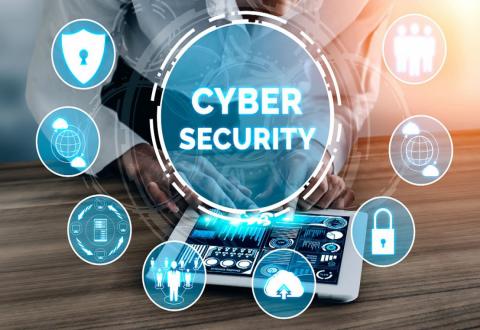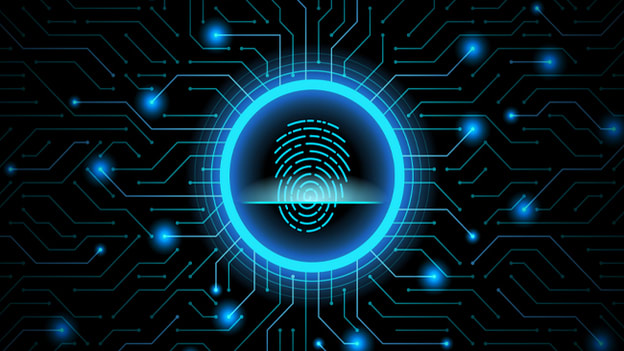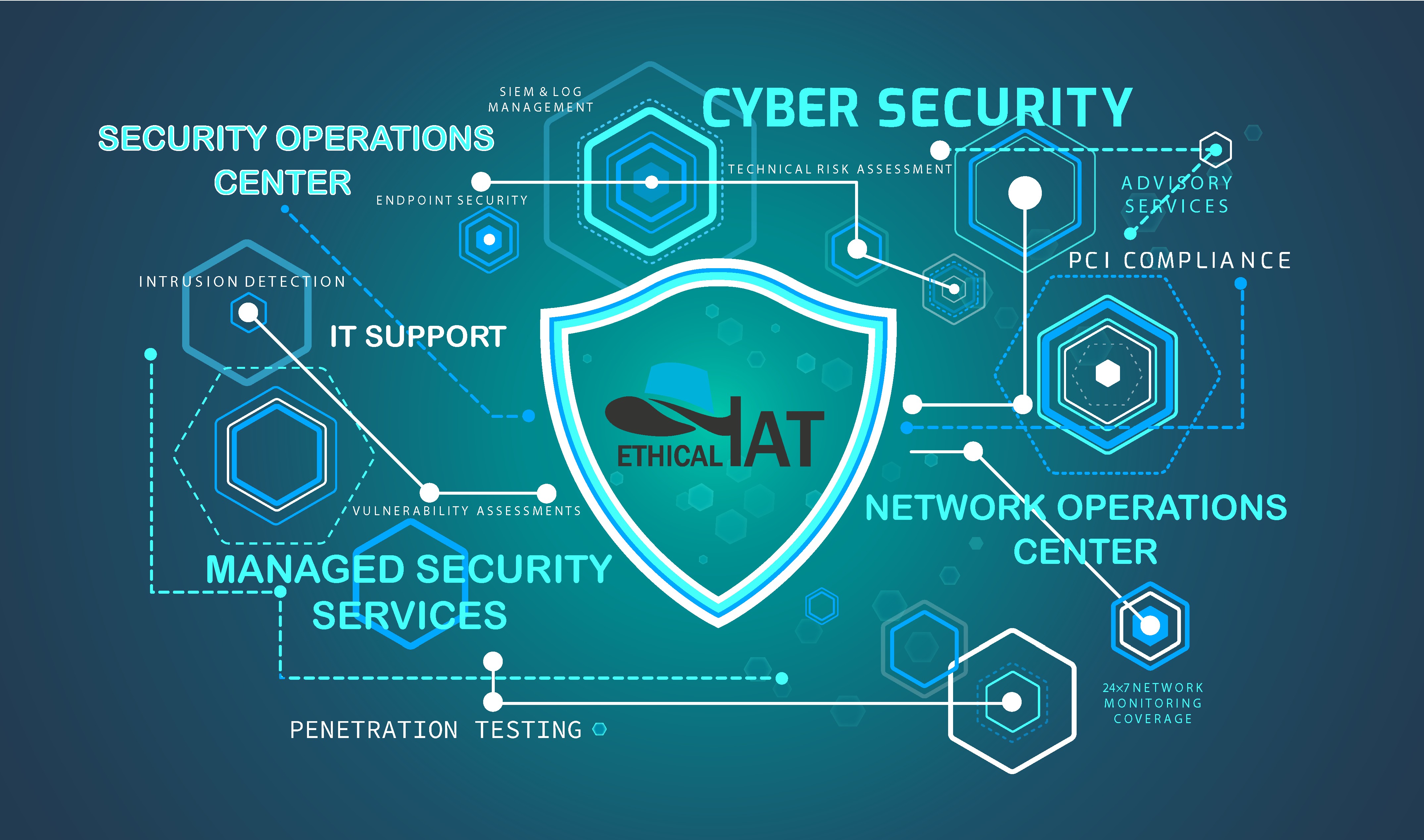Cyber Security#

Let's discover
Learn Cyber Security with Blue Code in less than 5 minutes.
Getting Started#
Cyber security refers to the body of technologies, processes, and practices designed to protect networks, devices, programs, and data from attack, damage, or unauthorized access. Cyber security may also be referred to as information technology security.
THE IMPORTANCE OF CYBER SECURITY#
Cyber security is important because government, military, corporate, financial, and medical organizations collect, process, and store unprecedented amounts of data on computers and other devices. A significant portion of that data can be sensitive information, whether that be intellectual property, financial data, personal information, or other types of data for which unauthorized access or exposure could have negative consequences. Organizations transmit sensitive data across networks and to other devices in the course of doing businesses, and cyber security describes the discipline dedicated to protecting that information and the systems used to process or store it.
As the volume and sophistication of cyber attacks grow, companies and organizations, especially those that are tasked with safeguarding information relating to national security, health, or financial records, need to take steps to protect their sensitive business and personnel information. As early as March 2013, the nation’s top intelligence officials cautioned that cyber attacks and digital spying are the top threat to national security, eclipsing even terrorism.
CHALLENGES OF CYBER SECURITY#
For an effective cyber security, an organization needs to coordinate its efforts throughout its entire information system. Elements of cyber encompass all of the following:
Network security:
The process of protecting the network from unwanted users, attacks and intrusions.
Application security: Apps require constant updates and testing to ensure these programs are secure from attacks.
Endpoint security: Remote access is a necessary part of business, but can also be a weak point for data. Endpoint security is the process of protecting remote access to a company’s network.
Data security: Inside of networks and applications is data. Protecting company and customer information is a separate layer of security.
Identity management:
Essentially, this is a process of understanding the access every individual has in an organization.
Database and infrastructure security: Everything in a network involves databases and physical equipment. Protecting these devices is equally important.
Cloud security:
Many files are in digital environments or “the cloud”. Protecting data in a 100% online environment presents a large amount of challenges.
Mobile security: Cell phones and tablets involve virtually every type of security challenge in and of themselves.
Disaster recovery/business continuity planning: In the event of a breach, natural disaster or other event data must be protected and business must go on. For this, you’ll need a plan.End-user education: Users may be employees accessing the network or customers logging on to a company app. Educating good habits (password changes, 2-factor authentication, etc.) is an important part of cybersecurity.
The most difficult challenge in cyber security is the ever-evolving nature of security risks themselves. Traditionally, organizations and the government have focused most of their cyber security resources on perimeter security to protect only their most crucial system components and defend against known treats. Today, this approach is insufficient, as the threats advance and change more quickly than organizations can keep up with. As a result, advisory organizations promote more proactive and adaptive approaches to cyber security. Similarly, the National Institute of Standards and Technology (NIST) issued guidelines in its risk assessment framework that recommend a shift toward continuous monitoring and real-time assessments, a data-focused approach to security as opposed to the traditional perimeter-based model.

Types of cyber threats#
The threats countered by cyber-security are three-fold:
Cybercrime includes single actors or groups targeting systems for financial gain or to cause disruption.
Cyber-attack often involves politically motivated information gathering.
Cyberterrorism is intended to undermine electronic systems to cause panic or fear.
So, how do malicious actors gain control of computer systems? Here are some common methods used to threaten cyber-security:
Malware Malware means malicious software. One of the most common cyber threats, malware is software that a cybercriminal or hacker has created to disrupt or damage a legitimate user’s computer. Often spread via an unsolicited email attachment or legitimate-looking download, malware may be used by cybercriminals to make money or in politically motivated cyber-attacks.
Virus: A self-replicating program that attaches itself to clean file and spreads throughout a computer system, infecting files with malicious code.
Trojans: A type of malware that is disguised as legitimate software. Cybercriminals trick users into uploading Trojans onto their computer where they cause damage or collect data.
Spyware: A program that secretly records what a user does, so that cybercriminals can make use of this information. For example, spyware could capture credit card details.
Ransomware: Malware which locks down a user’s files and data, with the threat of erasing it unless a ransom is paid.
Adware: Advertising software which can be used to spread malware.
Botnets: Networks of malware infected computers which cybercriminals use to perform tasks online without the user’s permission.
SQL injection An SQL (structured language query) injection is a type of cyber-attack used to take control of and steal data from a database. Cybercriminals exploit vulnerabilities in data-driven applications to insert malicious code into a databased via a malicious SQL statement. This gives them access to the sensitive information contained in the database.
Phishing Phishing is when cybercriminals target victims with emails that appear to be from a legitimate company asking for sensitive information. Phishing attacks are often used to dupe people into handing over credit card data and other personal information.
Man-in-the-middle attack A man-in-the-middle attack is a type of cyber threat where a cybercriminal intercepts communication between two individuals in order to steal data. For example, on an unsecure WiFi network, an attacker could intercept data being passed from the victim’s device and the network.
Denial-of-service attack A denial-of-service attack is where cybercriminals prevent a computer system from fulfilling legitimate requests by overwhelming the networks and servers with traffic. This renders the system unusable, preventing an organization from carrying out vital functions.
End-user protection#
End-user protection or endpoint security is a crucial aspect of cyber security. After all, it is often an individual (the end-user) who accidentally uploads malware or another form of cyber threat to their desktop, laptop or mobile device.
So, how do cyber-security measures protect end users and systems? First, cyber-security relies on cryptographic protocols to encrypt emails, files, and other critical data. This not only protects information in transit, but also guards against loss or theft.
In addition, end-user security software scans computers for pieces of malicious code, quarantines this code, and then removes it from the machine. Security programs can even detect and remove malicious code hidden in primary boot record and are designed to encrypt or wipe data from computer’s hard drive.
Electronic security protocols also focus on real-time malware detection. Many use heuristic and behavioral analysis to monitor the behavior of a program and its code to defend against viruses or Trojans that change their shape with each execution (polymorphic and metamorphic malware). Security programs can confine potentially malicious programs to a virtual bubble separate from a user's network to analyze their behavior and learn how to better detect new infections.
Security programs continue to evolve new defenses as cyber-security professionals identify new threats and new ways to combat them. To make the most of end-user security software, employees need to be educated about how to use it. Crucially, keeping it running and updating it frequently ensures that it can protect users against the latest cyber threats.
Latest cyber threats#
What are the latest cyber threats that individuals and organizations need to guard against? Here are some of the most recent cyber threats that the U.K., U.S., and Australian governments have reported on.
In December 2019, the U.S. Department of Justice (DoJ) charged the leader of an organized cyber-criminal group for their part in a global Dridex malware attack. This malicious campaign affected the public, government, infrastructure and business worldwide.
Dridex is a financial trojan with a range of capabilities. Affecting victims since 2014, it infects computers though phishing emails or existing malware. Capable of stealing passwords, banking details and personal data which can be used in fraudulent transactions, it has caused massive financial losses amounting to hundreds of millions.
In response to the Dridex attacks, the U.K.’s National Cyber Security Centre advises the public to “ensure devices are patched, anti-virus is turned on and up to date and files are backed up”.
In February 2020, the FBI warned U.S. citizens to be aware of confidence fraud that cybercriminals commit using dating sites, chat rooms and apps. Perpetrators take advantage of people seeking new partners, duping victims into giving away personal data.
The FBI reports that romance cyber threats affected 114 victims in New Mexico in 2019, with financial losses amounting to $1.6 million.
In late 2019, The Australian Cyber Security Centre warned national organizations about a widespread global cyber threat from Emotet malware.
Emotet is a sophisticated trojan that can steal data and also load other malware. Emotet thrives on unsophisticated password: a reminder of the importance of creating a secure password to guard against cyber threats.

Cyber safety tips - protect yourself against cyber attacks#
How can businesses and individuals guard against cyber threats? Here are our top cyber safety tips:
Start Full Cyber Security Course with Blue 🐬Code here#
RECOMENDED BOOK#
Click on me to download your Cyber Security Essentials Book..
Click on me to download your Cyber Security Analytics, Technology and Automation Book..
This Video provides you a full course on Cyber Security